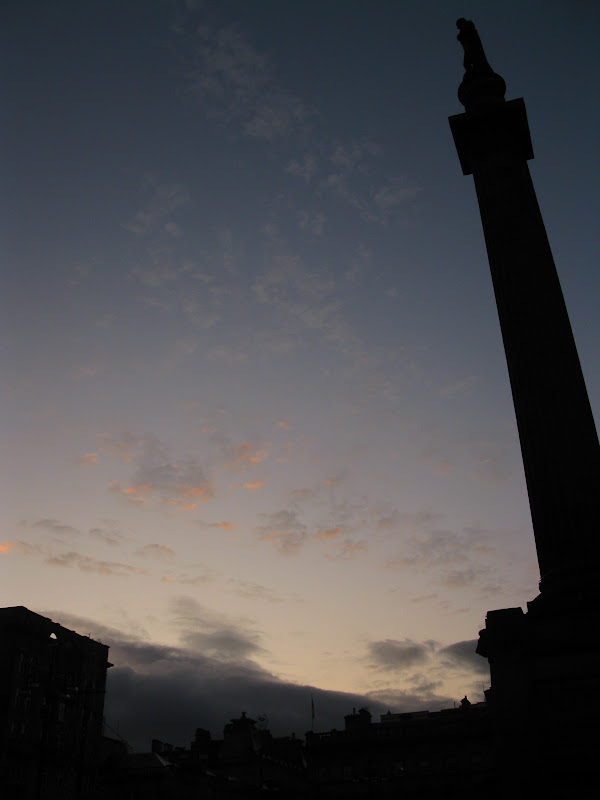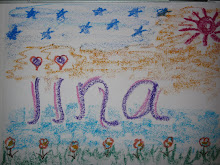•Monday, January 25, 2010
Antara gambar-gambar kenangan di London..
Sebenarnya terdapat banyak gambar lagi..
Tak jumpa pula failnya(rasanya dalam external hdsk)
I always enjoy being in London..
Hope to be there again anytime this year..

London Eye


Big Ben London at nite

Harrod London

Dalam Harrod.. Chocolate shop..

Me and Suthanya
While attending Internet World Exhibition Conference at Earl Court 2 London
Seksi kan 2 gadis english nie ;)

•Monday, January 18, 2010
Suatu ketika dulu.. Ulang-tayang cerita itu
Alangkah indahnya warna kuning jingga waktu senja..
Walau kemana jua bumi dipijak..
Walau kemana jua kaki melangkah
Walau kemana jua negara yang dijejaki
Warna senja itu pastinya sama..

Senja di tanahair..
Dalam perjalanan balik dari Tg Malim ke Banting..

Senja di Cordoba, Sepanyol.

Senja di Istanbul, Turki.

Senja di Barcelona.

Senja di Perancis, dalam perjalanan dari Perpignan ke Toulouse.

Senja dalam perjalanan mengelilingi 'highland' dan lautan di utara Scotland.

Senja di Oban, Scotland.


Senja di Glasgow.

•Sunday, January 10, 2010
Ini antara gambar yang sempat diambil semasa ke Cordoba di Andalusia dulu.. Kami hanya sempat berada di sana dalam 2 jam sahaja dan kebetulan masa itu kamera digitalku pula kehabisan bateri.. terpaksa menggunakan fungsi kamera pada kamera video digital yang agak rendah megapixelnya..
Jika ada kesempatan lagi.. Aku pasti mahu ke sini lagi.. Apatah lagi waktu ini pakwe tidak ikut bersama kerana faktor kerja di saat-saat akhir. Harapnya dia mahu ke sini lagi.. Kerana aku suka Andalusia.. Berada di sana membuatkan aku teringatkan tanahair.. Banyak perkara di sana yang mengingatkan tentang tanahair..
Córdoba (also Cordova) is a city in Andalusia, southern Spain, and the capital of the province of Córdoba. Located at 37.88° North, 4.77° West, on the Guadalquivir river, it was founded in ancient Roman times as Corduba by Claudius Marcellus. Its population in 2008 was 325,453.
Today a moderately-sized modern city, the old town contains many impressive architectural reminders of when Qurṭuba (قرطبة), the thriving capital of the Caliphate of Córdoba, governed almost all of the Iberian peninsula. It has been estimated that in the latter half of the tenth century Córdoba, with up to 500,000 inhabitants, was then the most populated city in Europe and, perhaps, in the world.

Antara cenderamata yang dijual

Andalusia terkenal dengan pokok-pokok limau yang ditanam di sekitar setiap bandarnya


Buah limau ini tidak boleh dimakan manusia kerana terlalu masam.. kami dah cuba makan memang masam pun..


Masjid Cordoba

The Great) Mezquita (of Córdoba or Cordova)is a Roman Catholic Cathedral originally built as a Mosque on the place (and partly with materials) of what previously had been a Christian Visigothic Church in the Andalusian city of Córdoba, Spain. It is regarded as perhaps the most accomplished monument of the Umayyad dynasty of Córdoba. After the Spanish Reconquista, it was turned into a church, with a Gothic cathedral inserted into the center of the large Moorish building. Today the entire building is used to house the Cathedral of the diocese of Córdoba in Spain.





The building was begun in approximately 600 AD as the Christian Visigothic church of St. Vincent. Emir Abd ar-Rahman I bought the church, and he and his descendants reworked it over two centuries to refashion it as a mosque, starting in 784. Additionally, Abd ar-Rahman I used the mosque (originally called Aljama Mosque) as an adjunct to his palace and named it to honor his wife. According to some authors the church of St. Vincent was demolished after it was bought from the local Christian community.
Several explanations have been proposed to explain the mosque's unorthodox orientation. Traditionally, the mihrab of a mosque faces in the direction of Mecca; by facing the mihrab, worshipers pray towards Mecca. Mecca is east-southeast of the mosque, but the mihrab points south. Some have suggested the mihrab faces south because the foundations of the mosque were taken from the old Roman and Visigoth constructions. Others contend that Abd ar-Rahman oriented the mihrab southward as if he were still in the Ummayyad capital of Damascus and not in exile.
The mosque underwent numerous subsequent changes: Abd ar-Rahman III ordered a new minaret, while Al-Hakam II, in 961, enlarged the building and enriched the mihrab. The last of the reforms was carried out by Al-Mansur Ibn Abi Aamir in 987.
It was the most magnificent of the more than 1,000 mosques in the city[citation needed] and was at one time the second largest mosque in the Muslim world. It was connected to the Caliph's palace by a raised walk-way, mosques within the palaces being the tradition for the Islamic rulers of all times.
The city in which it was built was subject to frequent invasion and each conquering wave added their own mark to the architecture. The building is most notable for its giant arches, with 856 columns of jasper, onyx, marble and granite. These were made from pieces of the Roman temple which had occupied the site previously, as well as other destroyed Roman buildings. The double arches, pictured above, were a new introduction to architecture, and helped support the tremendous weight of the higher ceilings. The double arches consist of a lower horseshoe arch and an upper semi-circular arch. The Mezquita also features richly gilded prayer niches. A centrally located honey-combed dome has blue tiles decorated with stars. The mihrab is a masterpiece of architectural art, with geometric and flowing designs of plants. The Mezquita reached its current dimensions in 987 with the completion of the outer naves and orange tree courtyard.
Patio de los Naranjos, inside the Mezquita.In 1236, Córdoba was recaptured from the Muslim army by King Ferdinand III of Castile and the mosque was converted into a Christian church. Alfonso X oversaw the construction of the Villaviciosa Chapel and the Royal Chapel within the mosque. The kings who followed added further Christian features: Enrique II rebuilt the chapel in the 14th century.
The most significant alteration was building a Renaissance cathedral nave in the middle of the structure. It was constructed by permission of Charles V, king of united Spain. Its reversion to a Christian church (officially the Cathedral of the Assumption of the Virgin) may have helped to preserve it when the Spanish Inquisition was most active.[citation needed]
Artisans and architects continued to add to the existing structure until the late 18th century.
Sumber dari wikipedia (http://en.wikipedia.org/wiki/Great_Mosque_of_C%C3%B3rdoba)

Bandar Cordoba di waktu senja

•Sunday, January 03, 2010
 London Eye
London Eye
 Big Ben London at nite
Big Ben London at nite Harrod London
Harrod London Dalam Harrod.. Chocolate shop..
Dalam Harrod.. Chocolate shop.. Me and Suthanya
Me and Suthanya 
 London Eye
London Eye
 Big Ben London at nite
Big Ben London at nite Harrod London
Harrod London Dalam Harrod.. Chocolate shop..
Dalam Harrod.. Chocolate shop.. Me and Suthanya
Me and Suthanya 
















































